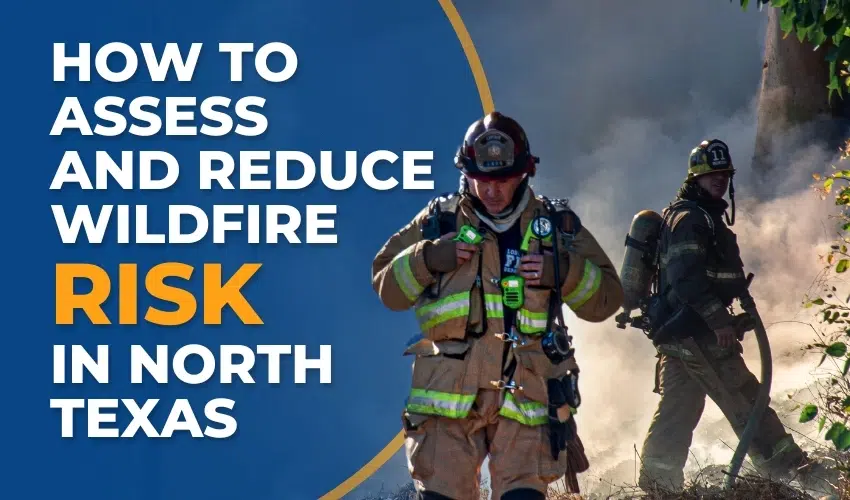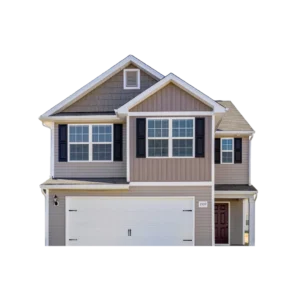The recent Palisades Fire in Los Angeles County, which began on January 7, 2025, and resulted in 12 fatalities and the destruction of over 6,800 structures, stresses the devastating impact wildfires can have on communities. While such incidents may seem distant, North Texas is not immune to wildfire threats. In 2023, wildfires in the Texas Panhandle led to fatalities and widespread property destruction, and in 2022, a grassfire in Balch Springs destroyed nearly three dozen homes. Understanding wildfire risk and implementing preventive measures are essential for safeguarding lives and property in our region.
Understanding Wildfire Risk in North Texas
Wildfire risk is influenced by factors such as weather conditions, wind patterns, and the materials used in home construction. Even in well-developed areas, fire can spread rapidly, particularly in neighborhoods near undeveloped land.
The Texas Wildfire Risk Explorer provides valuable insights into wildfire risk levels across the state. While much of the Dallas-Fort Worth metro area has minimal wildfire risk, certain neighborhoods, including some in Dallas County, have been identified as having moderate to high wildfire potential. Homeowners near open fields or pastures should take extra precautions.
One of the most significant threats during a wildfire is wind-driven embers. These small pieces of burning debris can travel up to a mile, igniting homes by landing on roofs, patio furniture, wood piles, and attic vents. Many wildfires cause destruction not through direct flames but through ember showers that ignite nearby structures.
Community Efforts to Reduce Wildfire Risk
Wildfire prevention requires both individual and collective action. Programs such as Firewise USA, led by the National Fire Protection Association (NFPA), encourage communities to work together to mitigate wildfire hazards.
The city of Lucas, Texas, is a designated Firewise USA site, meaning its residents actively implement fire prevention strategies, such as maintaining defensible space and removing fire hazards. These community-wide efforts help protect not only individual homes but entire neighborhoods.
How to Make Your Home More Fire-Resistant
Implementing fire-resistant measures can significantly reduce wildfire risk. Homeowners can take practical steps ranging from regular maintenance to using non-combustible materials in construction.
Fire-Resistant Building Materials
Using fire-resistant materials can increase a home’s ability to withstand wildfires. Recommended options include:
- Masonry, metal, or cement board siding instead of wood.
- Double-pane and tempered glass windows to withstand heat exposure.
- Metal fencing near structures instead of combustible wooden fencing.
Creating Defensible Space
A defensible space is a buffer around a home that reduces fire spread and provides firefighters with a safer environment to protect structures. Key steps include:
- Replacing wood mulch with river rock or pebbles to reduce flammability.
- Keeping gutters and roofs clear of leaves and other debris.
- Trimming trees and bushes to prevent them from touching the home.
- Moving flammable materials, such as firewood and patio furniture, away from exterior walls.
- Keeping shrubs and vegetation away from windows, as heat from burning plants can break glass and allow fire to enter.
Protecting Against Embers
Since embers are one of the primary wildfire risks, homeowners are recommended to take the following precautions:
- Install 1/8-inch metal screens on attic and foundation vents to prevent embers from entering.
- Ensure roof shingles are secure and undamaged to reduce vulnerabilities.
- Remove debris from under decks and porches, as these areas can accumulate flammable material.
Checking Your Home’s Wildfire Risk
The Texas Wildfire Risk Explorer is a useful tool for homeowners to assess their fire risk. By entering an address, users can view the risk level for their location and determine what preventative measures to take. For those living near undeveloped land, pastures, or wooded areas, fire-resistant measures are critical.
Does Fire Mitigation Affect Home Insurance?
While fire mitigation may not directly lower insurance premiums, it can make it easier to qualify for coverage in high-risk areas. Some insurance providers may decline coverage for homes with significant wildfire exposure. Implementing fire-resistant measures can be a deciding factor in securing a policy.
Rich Johnson of the Insurance Council of Texas (ICT) explains that while discounts may not always be available, fire mitigation can reduce the likelihood of filing a claim, ultimately preventing financial loss and property damage.
Consulting with a Property Damage Attorney
In the unfortunate event of wildfire damage, homeowners may face challenges when dealing with insurance claims. Consulting with a property damage attorney can provide guidance on policy coverage, claim disputes, and potential legal action if an insurer denies or undervalues a claim. An attorney can help you receive the compensation you need to rebuild and recover.





